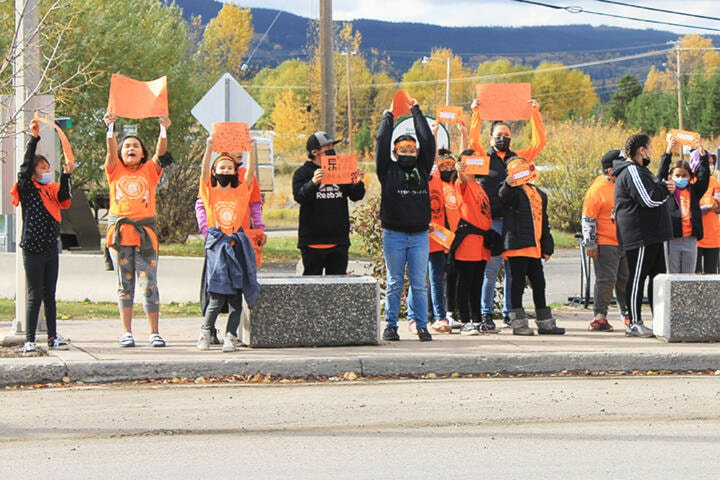At a board meeting on Oct. 21, the Regional District of Bulkley-Nechako (RDBN) made the decision to bring forth five of the Truth and Reconciliation Commission’s 94 calls to action at every board meeting moving forward. The reason is to create space for the board to discuss how to support local first nations in their advocacy for reconciliation efforts in the region.
This decision came on the heels of the 2021 UBCM convention’s Pathways to Truth and Reconciliation plenary session with the Honorable Murray Sinclair. The session specifically focused on the Truth and Reconciliation Commission’s 94 Calls to Action and how individuals, local governments, and agencies could work towards reconciliation.
Each meeting, five of the 94 calls to action will be discussed, and each board director will have opportunities to reflect and debate on actions that can be taken both individually and from a community standpoint.
“Reconciliation is not a spectator sport, it’s something we need to be engaged in. I think that as we go through these calls to action each meeting, it will make us more aware of some of the issues out there, and allows us to take the time to look at these issues and talk about where we are with them in our communities and how we can improve on them,” said Chair of the Board Gerry Thiessen in the meeting.
It was noted by RDBN Chief Administrative Officer Curtis Helgesen that some of the calls to action are more focused at federal and provincial government, though there are also lots that pertain more to local government as well.
As part of the decision, the first five calls to action were brought forth for discussion at the Oct. 21 board meeting to kick start the initiative.
The first was a call upon the federal, provincial, territorial, and Aboriginal governments to commit to reducing the number of Aboriginal children in care. Included were ways this could be accomplished, such as monitoring and assessing neglect investigations, providing adequate resources to enable Aboriginal communities and child-welfare organization to keep Aboriginal families together where it is safe to do so, and ensuring that social workers are properly educated and trained about the history and impacts of residential schools.
Also included as a potential way to achieve the call of action was requiring that all child-welfare decision makers consider the impact of the residential school experience on children and their caregivers.
The second call to action was a call upon federal government, in collaboration with the provinces and territories, to prepare and publish annual reports on the number of Aboriginal children who are in care, compared with non Aboriginal children.
The third was a upon all levels of government to fully implement Jordan’s Principle, which is a child-first principle that aims to eliminate service inequities and delays for First Nations children.
The fourth call of action was made upon the federal government to enact Aboriginal child-welfare legislation that establishes national standards for Aboriginal child apprehension and custody cases.
The fifth and final call to action discussed in the meeting was a call upon the federal, provincial, territorial, and Aboriginal governments to develop culturally appropriate parenting programs for Aboriginal families.
No decisions were made as a result of the discussions, however, board members brainstormed ways to improve Indigenous child services in terms of food security in each electoral area, particularly in schools.
